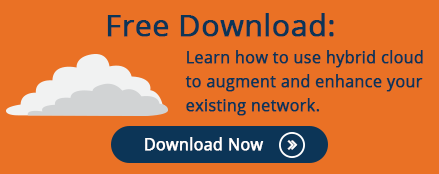 Where is your company in deploying a cloud model? Are you utilizing public cloud, or is your cloud strategy a little more advanced that leverages a hybrid cloud model? Don’t let the name trip you up; the term “cloud” is an abstraction for the complex infrastructure it conceals. The generally accepted definition of cloud computing comes from the National Institute of Standards and Technology (NIST). “Cloud Computing is a model for enabling convenient, on-demand network access to a shared pool of configurable computing resources that can be rapidly provisioned and released with minimal management effort or service provider interaction.”
Where is your company in deploying a cloud model? Are you utilizing public cloud, or is your cloud strategy a little more advanced that leverages a hybrid cloud model? Don’t let the name trip you up; the term “cloud” is an abstraction for the complex infrastructure it conceals. The generally accepted definition of cloud computing comes from the National Institute of Standards and Technology (NIST). “Cloud Computing is a model for enabling convenient, on-demand network access to a shared pool of configurable computing resources that can be rapidly provisioned and released with minimal management effort or service provider interaction.”
5 Characteristics of Cloud Computing
According to NIST, there are five essential characteristics of a cloud model, which include:
- Resource Pooling: Computing resources such as storage, processing, memory and bandwidth are geographically independent. The customer can not only access them regardless of location, but many times has no control or knowledge over the location of the hosted resources. Computing resources are pooled to serve multiple consumers using a multi-tenant model, with different physical and virtual resources dynamically assigned and reassigned according to consumer demand.
- Rapid Elasticity: Cloud computing is about agility and flexibility, such as the ability to meet work flow demands in real time by increasing and decreasing capacity as needed in automated fashion. It’s about having the capability to leverage resources on a global scale.
- On-Demand Self-Service: An ordinary user can provision computing capabilities, network resources and storage as needed automatically without requiring assistance or interaction from support personnel.
- Measured Service: Cloud providers offer customers the ability to optimize and manage subscribed resources through metering. Resource usage is monitored and reported, which can be used for billing.
- Broad Network Access: Resources are accessed through standard mechanisms over the network for client platforms, as well as mobile devices.
Available Cloud Models
The cloud isn’t a technology, but a new approach to deploying and managing business IT services. It’s also not a single design solution that fits all organizations. At its basic level, cloud computing is broken down into four basic deployment models.
Private Cloud
A private cloud is a single tenant environment that is owned and utilized by a single organization and usually governed by the internal IT department. Its primary purpose is to centralize access to IT resources for the organization. Because it is totally on premise, the private cloud offers the greatest level of control over performance, security and data sovereignty. Because the private cloud requires a high degree of CapEx, spending it doesn’t provide the cost savings offered by the other deployment models.
Public Cloud
This is when a cloud provider shares resources and services over a public network. It is a multi-tenant environment in that customers may share the same hardware of a cloud provider but in a manner completely transparent to them. A public cloud may specialize in delivering a single type of resource such as Dropbox, which provides both free and subscription based storage. Customers pay either a flat subscription or pay a contracted variable cost for what they use.
Community Cloud
A community cloud offers a multi-tenant computing environment for organizations with common computing concerns, such as regulatory compliance or performance requirements. The environment can be managed by a third party or by the collective organizations themselves. An example of a community cloud might be a cloud provider that specializes in serving HIPPA compliant organizations, which must meet strict auditing and governmental regulations.
Hybrid Cloud
The hybrid cloud model is tailored and customized to fit your organization’s needs; it’s all about scalability. Offering the best of both world between public and private cloud, the typical hybrid cloud is based around the IaaS service model or Infrastructure as a Service. An IaaS provider is responsible for the networking and storage components, the physical servers and the underlying virtual host infrastructure. The customer is then responsible for machine and application deployment and the management of the OS and data. The goal is to seamlessly integrate the on premise and cloud networks so that they operate in transparent cohesion.
When it comes to cloud architecture, WEI is the IT solutions provider that should be your go-to resource. For more information, download our white paper, "Using a Hybrid Cloud to Augment and Enhance Your Existing Network," for free today!











